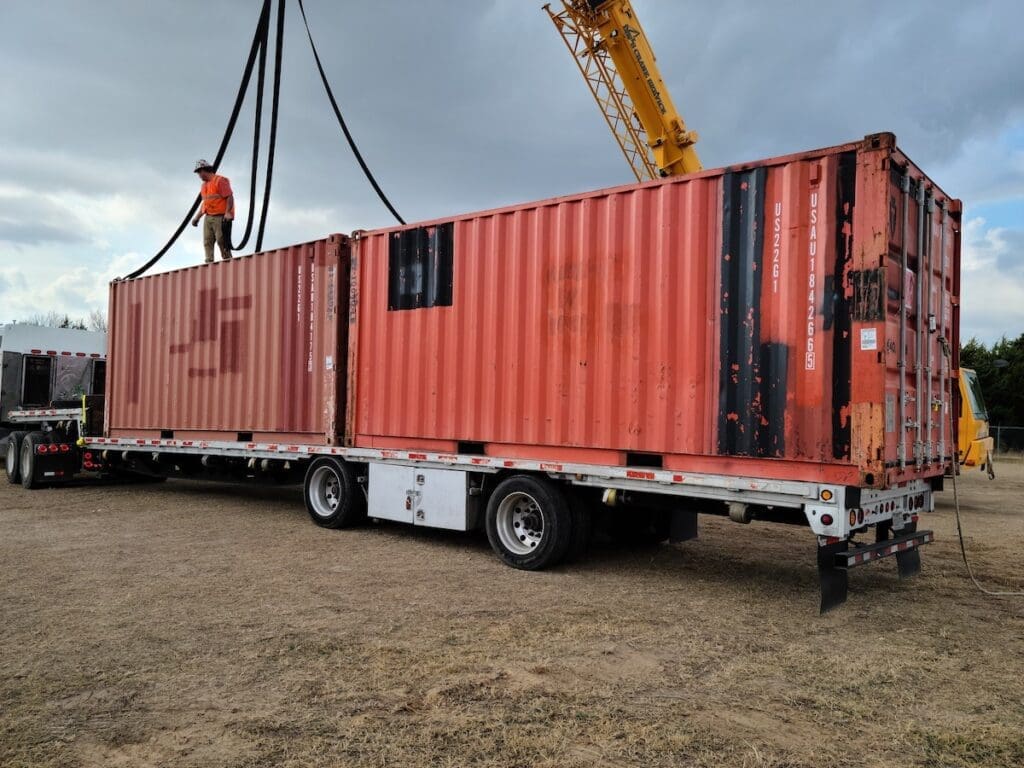You’ve probably heard the good news regarding cargo security. Law enforcement is cracking down on thieves, with good results: Last month the New Jersey State Police busted a $1 million cargo theft ring and the month before, the California Highway Patrol Cargo Theft Interdiction Program arrested a Los Angeles-based crew suspected of stealing more than a million dollars. Local police forces in California like the Tulare County Sheriff’s Ag Crimes Task Force are teaming up with growers and produces to combat agricultural theft—and it’s working. And cargo theft across the board dropped 15% in 2017, according to Cargo theft recording firm SensiGuard.
Though this may seem like cause for celebration, it’s not time to relax. In fact, you may need to be more vigilant than ever. Why? To begin with, that 15% statistic may be misleading. “It’s hard to gather definitively how much theft is up or down,” said Scott Cornell, a transportation crime and theft specialist with Travelers Insurance, who emphasized that SensiGuard’s numbers only included reported thefts, not the actual number of crimes. “We feel that reporting may be down, as well (as thefts).”
Some of the information in SensiGuard’s study got lost among the good news—like the fact that 2017’s average loss value was up. It was just a tenth of a percent over 2016, but enough that SensiGuard thinks that the lower number of reported thefts “does not indicate a decline in cargo theft risk in the U.S.” Instead, they believe that thieves are changing their modus operandi. “Organized cargo thieves are honing in on shipments that they know can be fenced easily,” the report noted. “Coupled with the average loss value remaining steady, this points to thieves refining their methods to reduce chance of capture or the need to abandon the shipment due to law enforcement pursuit.” Cornell agrees: “It’s like whack-a-mole. They (the thieves) shift when the heat is on, say from LA to San Bernardino. Law enforcement can’t always stop this crime—but they can move it around.”
And cargo theft isn’t down everywhere. In 2016, Mexico saw a 61% increase in cargo theft, and that number jumped to 127% in 2017. Even worse, nearly three-quarters of all Mexican cargo thefts involve a hijacking, putting drivers’ safety at risk. “We estimate that truck drivers are approximately six times more likely to get physically assaulted than injured in a road accident,” says Pierre Miranda of world road transport organization IRU. “Nevertheless, the average carrier is much more aware of road safety than security threats. There is a common misconception that security is an issue affecting only companies transporting high-value goods when it actually affects all types of freight transport.”
It’s also beginning to affect some types of transport more than others. Both SensiGuard and Cornell point to the growing incidence of thefts from less-than-truckload (LTL) shipments. These losses are sometimes too small for owners to bother filing police reports or insurance claims, and often involve easy-to-fence goods, like retail items. This type of theft, which SensiGuard categorizes as pilferage, has risen 40% from 2016 and 107% since 2013.
“Organized thieves in the U.S. have long utilized the ‘risk versus reward’ calculation when targeting cargo,” SensiGuard’s report noted. “As such, shifting focus to other methods and products that provide a lesser chance of capture or disruption, thieves can reduce their risk.”
Thieves are using other new strategies, too, including:
- Paying for goods with stolen credit cards: They buy goods, arrange for their transport, then sell the goods and skip out on the credit card bills. After all, the credit cards weren’t theirs anyway.
- 3D-printing security devices: It can take as little as 10 minutes for a thief to 3D-print a lock or a cargo seal. Drivers don’t know the difference until it’s too late.
- Imitating brokers and carriers: Thieves peruse Facebook, carrier websites, and load boards, and then create official-looking documents. Sometimes they pose as drivers who simply pick up loads and drive off with them (often arriving at the pick-up point minutes earlier than the true driver). Others pretend to be brokers who hire legitimate truckers and then direct them to their non-legitimate warehouses, where the drivers unwittingly unload the cargo right into the thieves’ hands. Some cargo thief rings go even further: They earn their target’s trust by running a business above board for a while. Then one day their truck “breaks down.” While it’s in the shop, they bring in another truck and steal the trailer full of goods. Some are cocky enough to file police reports.
Those clever theft strategies seem to be on the wane, though, probably due to law enforcement efforts. “We’re seeing more of a revision back to straight cargo theft,” says Cornell.
How to Protect Yourself
The return to old ways may actually make it simpler to guard your loads against theft. You can:
Utilize technology
: Hide GPS tracking devices inside boxes. Use door sensors to learn when your trailer has been opened. Install remote immobilizing technology to prevent thieves from driving off with your trailers. Go big with electronic freight security programs that can provide security in real time, even in remote areas. Just make sure that whatever you do is not easy for thieves to identify or circumvent.
Stay informed:
You need to know when and where your loads (and your drivers) are most at risk. In 2017:
The hottest goods for cargo thieves were:
- Home and garden products: 17%
- Food and drinks: 16%
- Electronics: 15%
- Building and industrial materials: 12%
The states where the most cargo theft occurred were:
- California, with 28% of all cargo thefts
- Texas, with 16%
- New Jersey, 11%
- Florida, 9%
- Georgia, 9%
The most common days for thefts:
- Friday: 19%
- Saturday: 17%
- Sunday: 16%.
- And 37% of cargo theft occurred when cargo was left unattended for multiple days without witnesses or electronic tracking. Holiday weekends, like Memorial Day, are especially risky.
Unsecured parking locations (like public parking areas, truck stops and drop lots), are also dangerous, accounting for 75% of thefts in 2017.
Educate drivers.
Since 75% of in-transit thefts involved stealing trailers when no one was watching, alerting drivers to risks and teaching them to take precautions can go a long way toward reducing cargo theft. Most deterrents are simple. Drivers can prevent thieves from separating tractors and trailers by using kingpin locks. They can park tail-to-tail, putting rear cargo doors out of reach from thieves. They can check seals every time they return to the truck so that any theft can be reported correctly. “When the driver realizes a pallet has gone missing, it can be difficult to know which jurisdiction to call to report the theft,” says Cornell, who emphasized the importance of driver education. “The first thing we teach at Travelers is behaviors.”
You Can Feel Secure With Us
At Next Exit Logistics, we earn the trust of our clients with efficiency, transparency, and security. In addition, we understand how to handle freight services for unusual, oversize, or overweight shipments and are certified to arrange the shipment of hazardous materials. To learn more about our services, call Next Exit Logistics at 866-624-2661 or contact us via e-mail.




